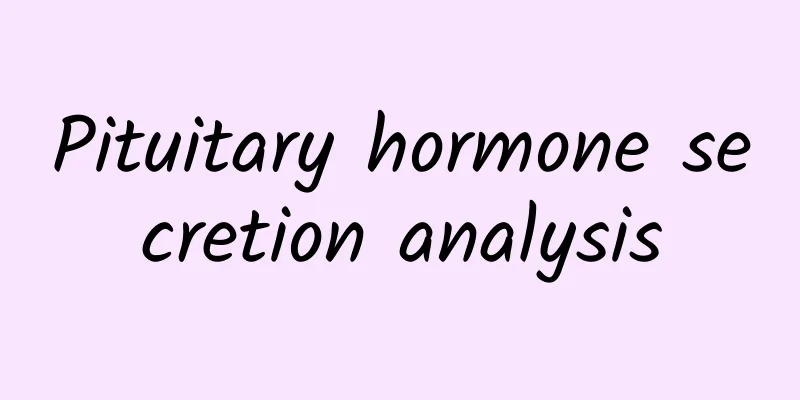Pituitary hormone secretion analysis

|
Most people have little contact with the pituitary gland, but may have learned about it in middle school biology books. Generally speaking, it is located on the ventral side of the hypothalamus and is the most complex secretory gland in the human body. This gland should not be underestimated. The hormones it secretes will affect the growth and activity of the entire human body. Below we will give a popular science introduction to its structural characteristics and the functions of its main secreted hormones. According to its occurrence and structural characteristics, the pituitary gland can be divided into two major parts: the adenohypophysis and the neurohypophysis. The neurohypophysis consists of the pars neuralis and the pars infundibulum. The pituitary gland (as shown in the picture) is connected to the hypothalamus through the infundibulum. It is oval in shape and located in the pituitary fossa on the pituitary surface of the sphenoid body on the middle cranial fossa. It is covered with tough dura mater. The adenohypophysis located in the front comes from the epithelial sac (Rathke's pouch) at the top of the embryonic oral cavity. The adenohypophysis includes the distal part, tuberous part and intermediate part; the neurohypophysis located in the back is smaller and is formed by the downward protrusion of the floor of the third ventricle. [Main function of pituitary gland secreting hormones] 1. Growth hormone: promotes growth and development, protein synthesis and bone growth; 2. Prolactin: promotes breast development, maturation and milk secretion; 3. Thyroid stimulating hormone: controls the thyroid gland, promotes the synthesis and release of thyroid hormones, stimulates thyroid hyperplasia, increases cell size and number; 4. Gonadotropin: controls gonads, promotes the growth and development of gonads, regulates the synthesis and secretion of sex hormones, etc.; 5. Adrenocorticotropic hormone: controls the adrenal cortex, promotes the synthesis and release of adrenal cortical hormones, and promotes the proliferation of adrenal cortical cells; 6. Follicle-stimulating hormone: promotes the production of sperm in male testicles and eggs in female ovaries; 7. Somatogenin: Promotes the production of testosterone in male testicles and estrogen and progesterone in female ovaries, helps ovulation, pituitary gland and pineal gland; 8. Melanocyte stimulating hormone: controls melanocytes and promotes melanin synthesis; Through the functions of the 8 hormones secreted by the pituitary gland listed above, we can see that the pituitary gland controls and influences a wide range of areas. It promotes human growth and development, and the gonads and thyroid gland are also under its command and control. Therefore, this part must be protected. Once any abnormality occurs, it will affect the whole body. At the same time, it also affects people's aging speed. |
<<: Diagnostic criteria for neurogenic shock
>>: Treatment for migratory pain
Recommend
What is the cause of giant ear acne?
The main cause of giant ear acne is excessive sec...
What causes sudden stomach pain and nausea during pregnancy?
After becoming pregnant, women will experience ma...
Soaking your feet in vinegar can help you lose weight. Here are the benefits of soaking your feet in vinegar
Vinegar is a condiment that people often eat. In ...
Can people with scars have mole removal?
There are no two people who are exactly the same i...
What are the Chinese patent medicines for removing moisture from the body?
Dampness in the body has a great impact on people...
Parkinson's disease symptoms slow movement
The main symptoms of Parkinson's disease incl...
Anal falling sensation
With the progress and development of society, soc...
Is it normal for women to have too much discharge?
It is abnormal for women to have excessive secret...
Complete autoimmune antibody test
A full set of autoimmune antibody tests is now a ...
Is sphenoid sinusitis a serious disease?
Is sphenoid sinusitis a serious condition? Before...
What to do if a child has a nosebleed due to internal heat? There are ways to adjust the diet
In summer, due to the hot and dry weather, childr...
Causes of frozen shoulder
Frozen shoulder is a common disease, and it tends...
Symptoms of excessive lead
Lead poisoning is a common poisoning phenomenon, ...
What should I do if I have a lot of closed comedones?
Closed comedones are a relatively common type of ...
Why does lumbar spinal nerve compression occur?
People's current lifestyle has great disadvan...









